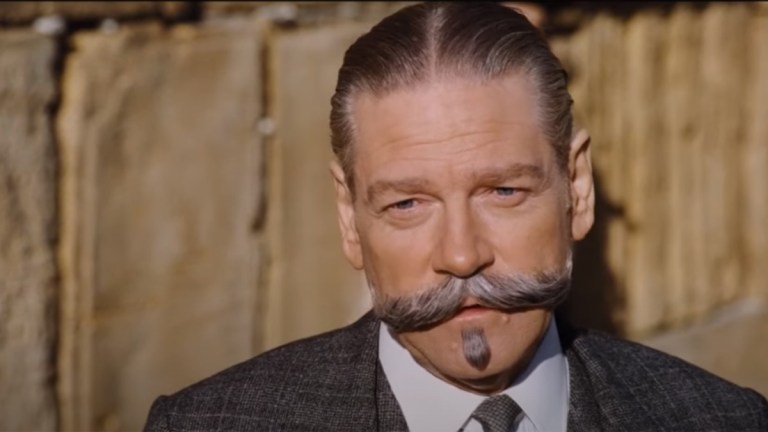Kenneth Branagh’s Next Poirot Movie Should Skip His Favourite Agatha Christie Book
The final twist is too implausible for the screen. Spoilers.

In 2017, on the press circuit for his first Hercule Poirot film Murder on the Orient Express, Kenneth Branagh was asked by French newspaper Le Figaro to name his three favourite Agatha Christie Novels. The actor-director picked Orient Express, of course, and two others: The Murder of Roger Ackroyd, published in 1926, and, published a decade later in 1936, Murder in Mesopotamia.
“I like one, Roger Ackroyd, because it’s deep in the heart of England so it’s classic Christie, village green…,” said Branagh. “And the other one because it’s in a super-exotic archaeological dig and she knew those really well so you feel in both of those cases amazing detail. She knows what she’s writing about.”
Christie would know the setting for Murder in Mesopotamia, an archaeological dig in Iraq, having spent several months on expeditions in Iraq and Syria with her second husband, archaeologist Sir Max Mallowan.
In many ways, Murder in Mesopotamia would make an excellent choice for Branagh and screenwriter Michael Green’s next Hercule Poirot film adaptation. Like their previous three Christie adaptations (Murder on the Orient Express, Death on the Nile, A Haunting in Venice), it has an exotic backdrop to English-speaking audiences, a large and varied cast of characters, and the added excitement of some spy genre intrigue alongside the murder plot.
But apart from the fact that Hercule Poirot doesn’t show up until well into the story, there’s one major reason to skip it: the killer twist.
Murder in Mesopotamia plot spoilers below
The 288-page novel is the story of Louise Leidner, the wife of Swedish-American archaeologist Dr Eric Leidner. On an archaeological dig in the fictional Iraqi city of Hassanieh, Louise is found murdered. Hercule Poirot, who is travelling nearby, is called in to investigate, and then a second murder takes place.
Poirot takes an interest in Louise’s history prior to the dig, specifically in her late first husband Frederick Bosner and a series of threatening letters she received after his death when she became close to other men. Bosner was a German arrested as a spy and sentenced to death in World War I. He escaped but later died in a train crash.
Or so Louise had been led to believe.
Bosner was indeed in the train crash, but didn’t perish on board. Instead, he swapped clothing and effects with one of its victims and assumed his identity in order to hide from the authorities. That victim was Dr Eric Leidner, Louise’s second husband. Bosner was so obsessively jealous of Louise being with other men, he re-married her under an assumed identity, and later killed her. Louise had been married to her first husband all along, but hadn’t realised that it was him.
You can see the problem. On the page it’s suspect and just about workable, but on screen? How could this story be told with everybody’s faces in full cinematic view? The ITV David Suchet adaption had everything to recommend it (including the addition of Sgt Hastings) but still stumbled over that implausible final twist.
So that’s why, whichever of Christie’s Poirot novels Branagh and Green choose to adapt next, it shouldn’t be Murder in Mesopotamia. That said, Branagh’s other favourite, The Murder of Roger Ackroyd, is another matter…
